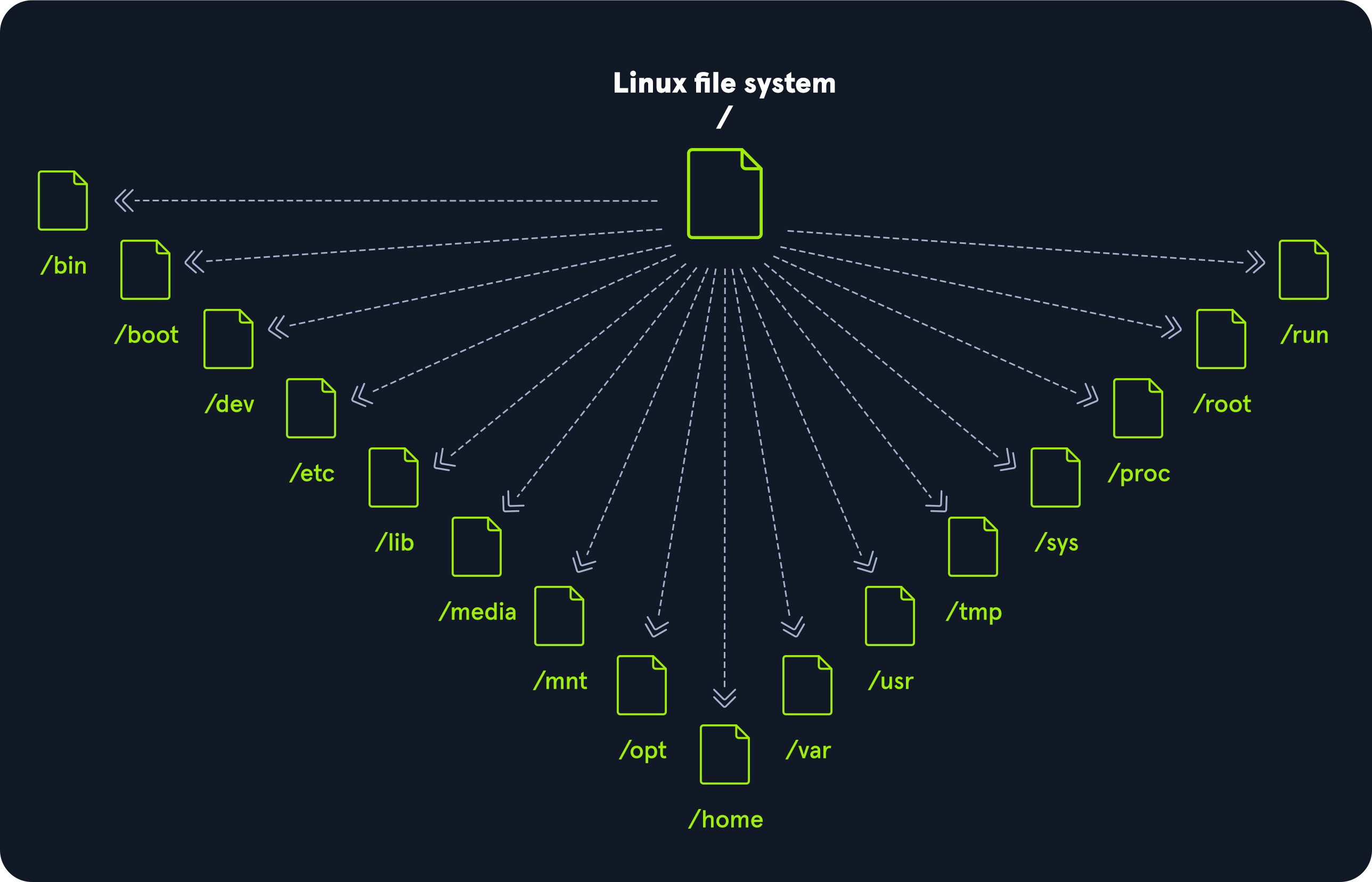Linux Structure
History
Philosophy
Linux follows five core principles:
| Principle | Description |
|---|---|
| All configuration files for the various services running on the Linux operating system are stored in one or more text files. |
| Linux offers many different tools that we will work with, which can be combined to work together. |
| The integration and combination of different tools enable us to carry out many large and complex tasks, such as processing or filtering specific data results. |
| Linux is designed to work mainly with the shell (or terminal), which gives the user greater control over the operating system. |
| An example of such a file is the |
Components
|
Component |
Description |
|
Bootloader |
A piece of code that runs to guide the
booting process to start the operating system. Parrot Linux uses the GRUB
Bootloader. |
|
OS Kernel |
The kernel is the main component of an
operating system. It manages the resources for I/O devices the system at the
hardware level. |
|
Daemons |
Background services are called
"daemons" in Linux. Their purpose is to ensure that key functions
such as scheduling, printing, and multimedia are working correctly. These
small programs load after we booted or log into the computer. |
|
OS Shell |
The operating system shell or the command
language interpreter (also known as the command line) is the interface
between the OS and the user. This interface allows the user to tell the OS
what to do. The most commonly used shells are Bash, Tcsh/Csh, Ksh, Zsh, and Fish. |
|
Graphics server |
This provides a graphical sub-system (server)
called "X" or "X-server" that allows graphical programs
to run locally or remotely on the X-windowing system. |
|
Window Manager |
Also known as a graphical user interface
(GUI). There are many options, including GNOME, KDE, MATE, Unity, and
Cinnamon. A desktop environment usually has several applications, including
file and web browsers. These allow the user to access and manage the essential
and frequently accessed features and services of an operating system. |
|
Utilities |
Applications or utilities are programs that
perform particular functions for the user or another program. |
Linux Architecture
Component | Description |
Bootloader | A piece of code that runs to guide the booting process to start the operating system. Parrot Linux uses the GRUB Bootloader. |
OS Kernel | The kernel is the main component of an operating system. It manages the resources for I/O devices the system at the hardware level. |
Daemons | Background services are called "daemons" in Linux. Their purpose is to ensure that key functions such as scheduling, printing, and multimedia are working correctly. These small programs load after we booted or log into the computer. |
OS Shell | The operating system shell or the command language interpreter (also known as the command line) is the interface between the OS and the user. This interface allows the user to tell the OS what to do. The most commonly used shells are Bash, Tcsh/Csh, Ksh, Zsh, and Fish. |
Graphics server | This provides a graphical sub-system (server) called "X" or "X-server" that allows graphical programs to run locally or remotely on the X-windowing system. |
Window Manager | Also known as a graphical user interface (GUI). There are many options, including GNOME, KDE, MATE, Unity, and Cinnamon. A desktop environment usually has several applications, including file and web browsers. These allow the user to access and manage the essential and frequently accessed features and services of an operating system. |
Utilities | Applications or utilities are programs that perform particular functions for the user or another program. |
File System Hierarchy
The Linux operating system is structured in a tree-like hierarchy and is documented in the Filesystem Hierarchy Standard (FHS). Linux is structured with the following standard top-level directories:

|
Path |
Description |
|
/ |
The top-level directory is the root
filesystem and contains all of the files required to boot the operating
system before other filesystems are mounted as well as the files required to
boot the other filesystems. After boot, all of the other filesystems are
mounted at standard mount points as subdirectories of the root. |
|
/bin |
Contains essential command binaries. |
|
/boot |
Consists of the static bootloader, kernel
executable, and files required to boot the Linux OS. |
|
/dev |
Contains device files to facilitate access to
every hardware device attached to the system. |
|
/etc |
Local system configuration files.
Configuration files for installed applications may be saved here as well. |
|
/home |
Each user on the system has a subdirectory
here for storage. |
|
/lib |
Shared library files that are required for
system boot. |
|
/media |
External removable media devices such as USB
drives are mounted here. |
|
/mnt |
Temporary mount point for regular
filesystems. |
|
/opt |
Optional files such as third-party tools can
be saved here. |
|
/root |
The home directory for the root user. |
|
/sbin |
This directory contains executables used for
system administration (binary system files). |
|
/tmp |
The operating system and many programs use
this directory to store temporary files. This directory is generally cleared
upon system boot and may be deleted at other times without any warning. |
|
/usr |
Contains executables, libraries, man files,
etc. |
|
/var |
This directory contains variable data files
such as log files, email in-boxes, web application related files, cron files,
and more. |
Comments
Post a Comment